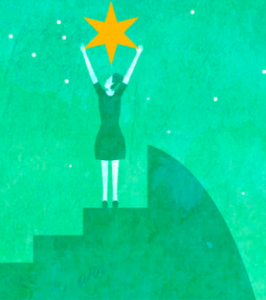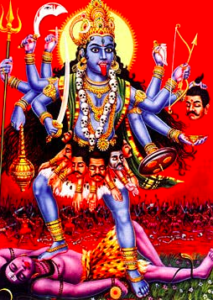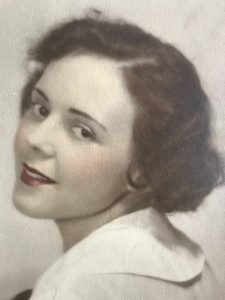 “One of the oldest themes in feminine mythology is the search for home. Tales of separation and wandering have been repeated through the ages, the question, ‘Where is my home?’ the plaintive lament of the woman in exile. Dispossessed, denigrated, diminished, the role of the powerful feminine, the goddess, in society has been subordinated to male gods leaving a passive narrowly subscribed shell where once passion, eroticism and playfulness reigned along with ambition, authority and dominion. The patriarchy has existed for eons and it is no less relevant today as we women, daughters of the patriarchy, still search for our rightful place, the qualities in ourselves that will make us whole and the roles in society that would bring these qualities to bear for the good of the world.”[i]
“One of the oldest themes in feminine mythology is the search for home. Tales of separation and wandering have been repeated through the ages, the question, ‘Where is my home?’ the plaintive lament of the woman in exile. Dispossessed, denigrated, diminished, the role of the powerful feminine, the goddess, in society has been subordinated to male gods leaving a passive narrowly subscribed shell where once passion, eroticism and playfulness reigned along with ambition, authority and dominion. The patriarchy has existed for eons and it is no less relevant today as we women, daughters of the patriarchy, still search for our rightful place, the qualities in ourselves that will make us whole and the roles in society that would bring these qualities to bear for the good of the world.”[i]
My dark night story is all about my search for home. This particular stage of my journey essentially involves a transition from identification with my material home, the outward place I live, to identification with my spiritual home, the inward place I dwell. However, I can also see the arc of my entire life story as focused on home. It is the thread that keeps recurring in the tapestry of my life, sometimes by my own choice and sometimes not.
The facts of the story are that I have lived in 23 homes so far in my six decades, an average of 3 years each, the shortest duration a few months and the longest a few years. In just the past 4 years of this dark night journey, I have moved 3 times, lived in 5 different homes, and done 3 complete renovations. On the surface, there were always rational reasons for these moves – my father was moved around in his job when I was a kid, I liked to fix up old houses and use the profit to fund my schooling, I wanted to be close to my son and grandsons. Underneath these tangible facts, though, was a deeper seeking, a drive for a sense of home that despite all my efforts I was missing.
It has taken a long time to realize I needed to turn inward. I have pursued serial careers, degrees and partnerships, each one expanding the scale and depth of my capacity in the field of change, most directly or indirectly centred on a sense of place, of helping others to feel more at home in their worlds. Ironically, only recently have I recognized that change in all these outward dimensions has diminishing returns without the correlative degree of change on the inside, in the evolution of our own consciousness. It is only in the past year I have been able to name this transition in me as a dark night and begin to inquire into its characteristics, although I see it stretching back at least 4 or 5 years.
It began with a feeling I needed a change of focus. My work had become less satisfying and life seemed to be missing something, a spark or new energy. I first did another degree program, looking for new stimulation that didn’t materialize. I thought a move to the country might do the trick, a new environment, new people and a new lease on life. When that didn’t work, I decided to retire and move to a new city on the other side of the country, again looking for the magic. And on it went, searching on the outside for something that could only be found on the inside.
With each of these unsuccessful attempts, it was becoming clearer I needed to concentrate not on doing but on being, a dramatic shift of my energy and intention. It was like cracking an egg. In slow motion, everything fell apart. I experienced breakdown, depression and darkness for a couple of years. It wasn’t continuous but would come in cycles, usually punctuated by my failure to find my place in the outside world, driving me back into my dark inner world. It was a time of incredible turmoil as I let go of who I was and searched for who I would become. I vacillated between frenzied energy and complete exhaustion, hopefulness and despair. The tools I had counted on – my agile mind and a persistent determination – didn’t seem to count anymore. Feelings seemed to rule the day, everything from anger, frustration, sadness to apathy, isolation, loneliness.
However, as I worked my way through, I found a growing sense of rebirth, joy and freedom. I began to experience laughter, lightness and love. I was very fortunate to have a group of friends and colleagues who supported me through my inner journey. I see it now as a spiritual quest, seeking my essential nature, my ultimate home in myself. In addition to attending and leading personal development workshops over these last years, I have meditated twice daily, filled several journals, read countless books, done silent and guided retreats, and spent long hours in stillness. I have also had the benefit of many deep conversations that have provided insights and inspiration along the way. It is hard work. It takes courage and the patience and support of others. The result is a coming home to grace, that spacious indwelling of joy in being alive, compassion for others, and loving embrace of all that is. I am grateful every day.
[i] The Hunger for Home
By Zenju Earthlyn Manuel – Spring 2018 In Upaya Newsletter




